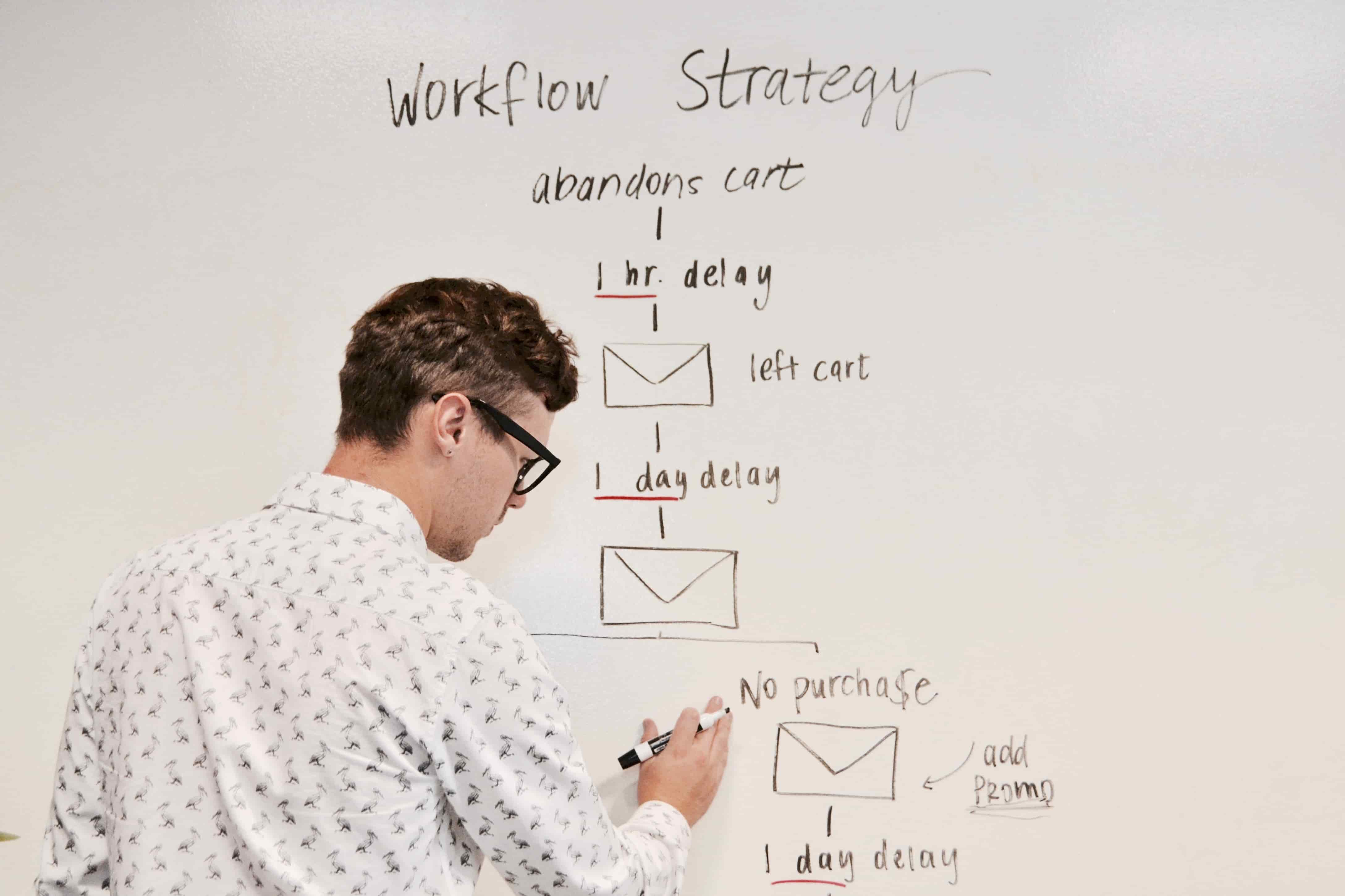
Top 10 Customer Feedback Strategies for SaaS Growth
Customer feedback should be a core part of any SaaS marketing strategy.
Regular product improvements and understanding customers’ changing preferences are two standard processes successful SaaS companies follow. Product strategy and development should be based on customer feedback.
Let’s look at how you can strategically leverage SaaS customer feedback strategies to support product development and growth, attract new customers, and retain existing customers.
Why is customer feedback important for SaaS growth?
A loyal customer base translates to reduced customer acquisition costs and more profit; thus, having loyal customers is the dream of every business. And there is a reason: according to a recent report, almost 65% of a company’s business comes from existing customers. And all this starts with gathering customer feedback.
- Product Improvement: Customer feedback highlights what users like and dislike, providing direct insights into how the product can be improved to meet customer needs more effectively.
- Customer Retention: By listening to and acting on customer feedback, SaaS companies can solve issues and enhance user satisfaction, which is crucial for retaining customers and reducing churn.
- Market Alignment: Feedback helps ensure the product evolves in line with market demands and user expectations, keeping the SaaS offering competitive and relevant.
- Innovation Direction: Customer suggestions can inspire new features or services, guiding the innovation pipeline and helping the company stay ahead of the curve.
- Credibility and Trust: Demonstrating a commitment to customer feedback can build trust and establish a company's reputation as customer-centric, fostering loyalty and encouraging word-of-mouth referrals.
With targeted SaaS feedback strategies, this information can be further used to develop better features, resolve support issues, and drive sales in the long run. In short, collecting customer feedback aims to align support with product development.
Customer Feedback Strategies to Drive SaaS Growth
Let’s look at the top ways you can collect and leverage customer feedback that promotes the growth of SaaS companies.
1. Create a Dedicated Customer Feedback Portal
What if you could get feedback regularly without annoying users with feedback surveys and emails? That’s precisely what a customer feedback portal helps you do. A 24/7, easily accessible feedback portal supports your actionable SaaS growth plan.
A dedicated customer feedback portal is a website or app designed for customers to provide feedback. It can be as simple as a form with a text box and submit button or more complex with features such as surveys, social media integration, etc.
This eliminates back-and-forth emails, endless surveys as well as feedback forms. As a growing SaaS company, creating a robust feedback system will help you proactively collect customer feedback, prioritize and organize it, and close the feedback loop.
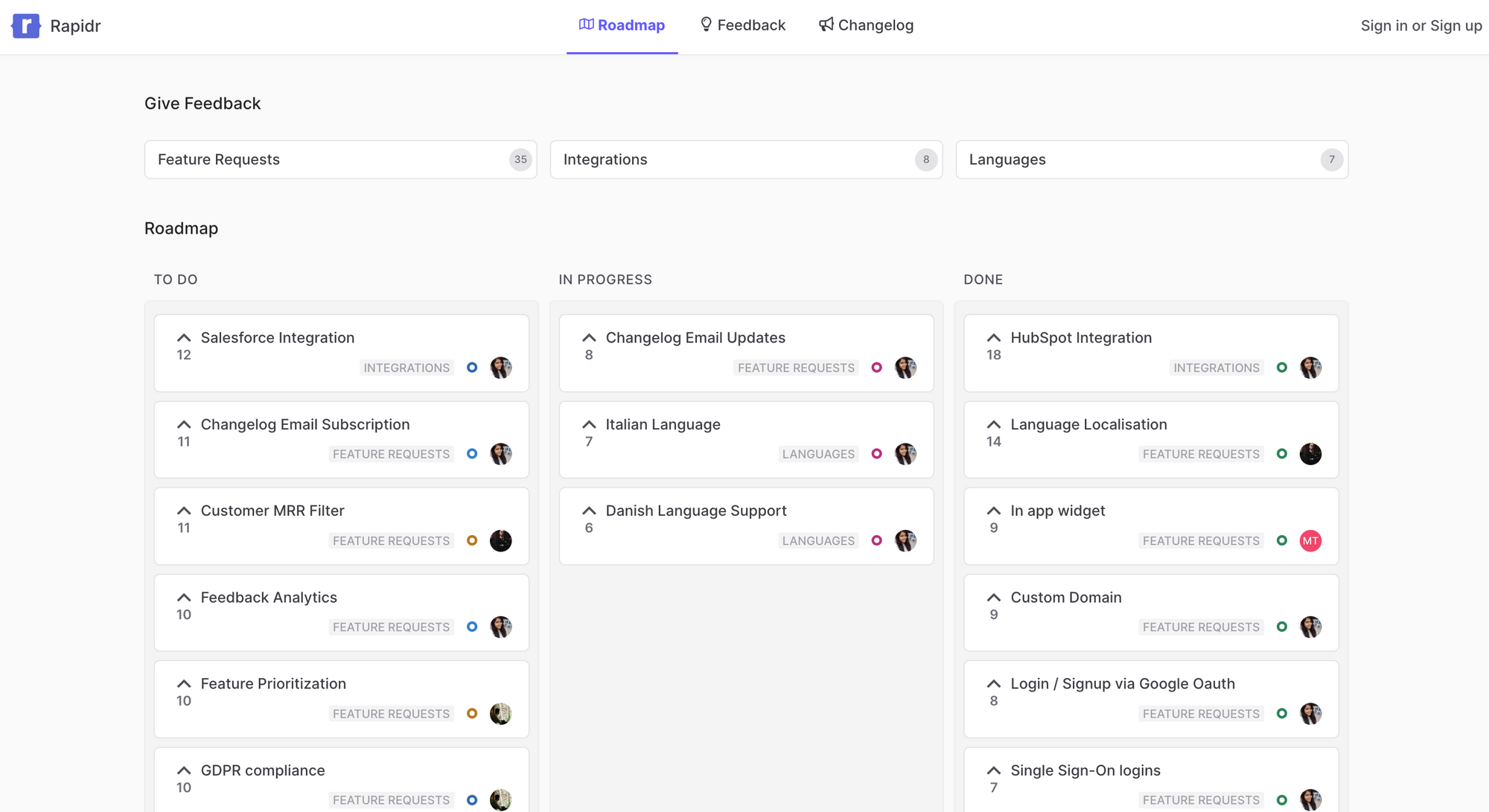
The easiest way to get your own portal for collecting feedback is using a feedback tool like Rapidr, which supports a hosted customer feedback portal with feedback widgets and a custom domain.
2. Talk to Your Customers
An obvious step, but many businesses ignore collecting feedback from customers.
The goal of communicating with customers is to know the reason behind their purchase decisions and learn about their needs and thought processes. You can communicate directly with the customers through user interviews, live chat widgets, social media, and real-time support.
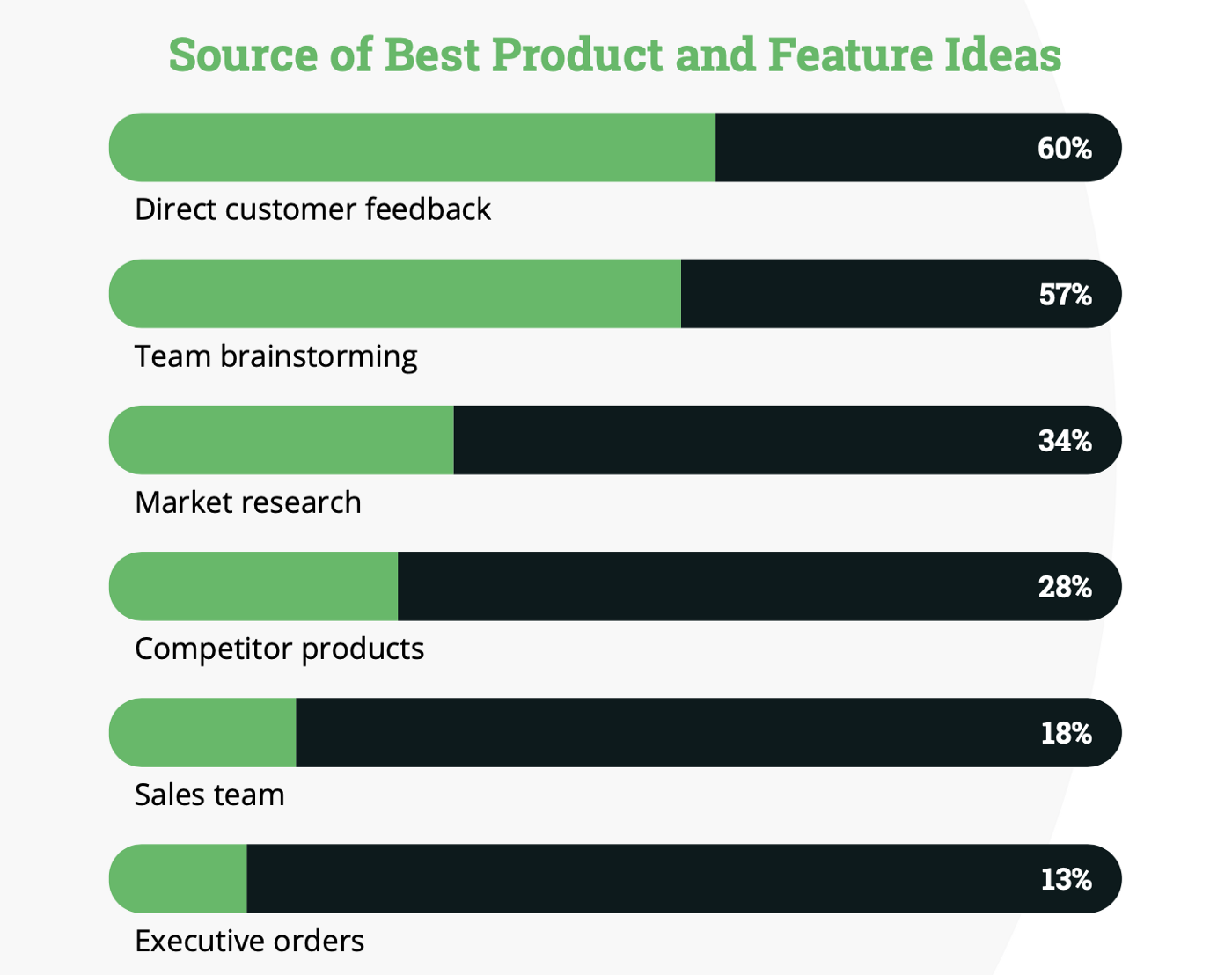
With proper feedback, you can uncover any scope for improving your product and resolve customer service issues they might be facing. As well as talking to customers can help you understand users' journeys, consolidate valuable insights, fix urgent issues, reduce friction, and boost customer engagement overall.
Why talking to your customer is the ultimate growth hack for your SaaS:
- Helps you understand your customers and measure the customer experience
- Improve your marketing efforts to build a target buyer persona
- Align your USP (unique selling proposition) and product messaging with customers’ needs.
- Develop a focused SaaS content strategy to create personalized marketing campaigns.
- Perform in-depth quantitative and qualitative customer research
- Optimize your landing pages to attract your target personas
3. Conduct Regular Customer Surveys & Interviews
Periodic surveys can help you understand customer satisfaction, usage patterns, and areas for enhancement. Ensure these surveys are concise and targeted set of questions to increase response rates.
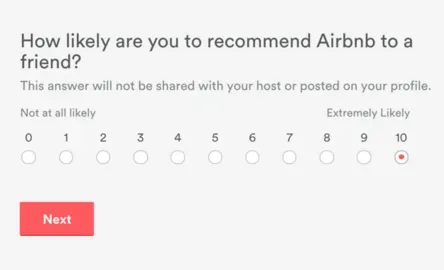
Conducting in-depth interviews with a select group of customers can provide deep insights into user needs, experiences, and expectations. This qualitative feedback is invaluable for understanding the nuances of customer satisfaction.
4. Close the Feedback Loop
A customer feedback loop is the process of aggregating customer feedback, deriving meaningful insights, taking action, and responding to customers with updates.
Listening to customers and gathering their feedback is not enough to drive growth for your company; closing the feedback loop is equally important. Here’s how a feedback loop works:
- Gather feedback from different sources
- Organize and prioritize customer feedback
- Act on feedback
- Keep customers informed about the progress
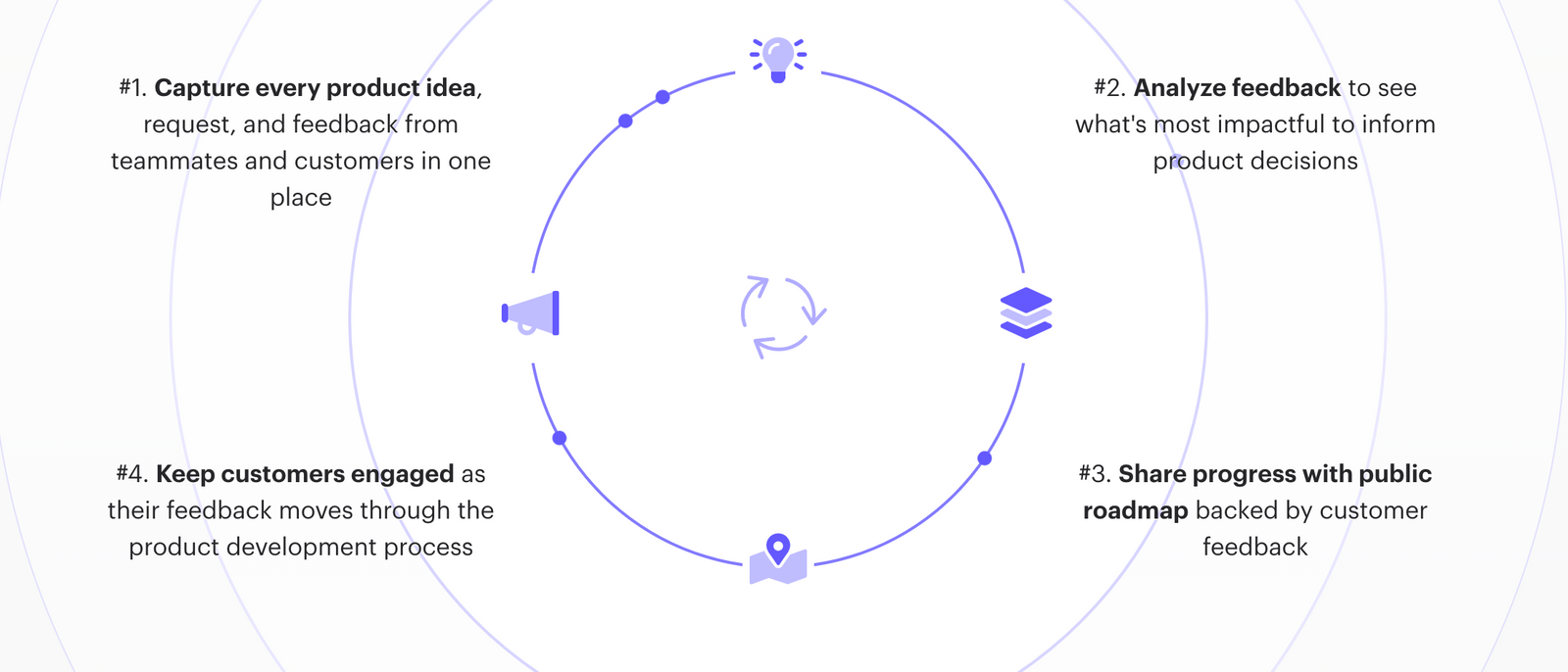
The first step is collecting feedback from prospects, users, and website visitors. SaaS companies keep track of different types of customer feedback, including feature requests, bug reports, and reviews.
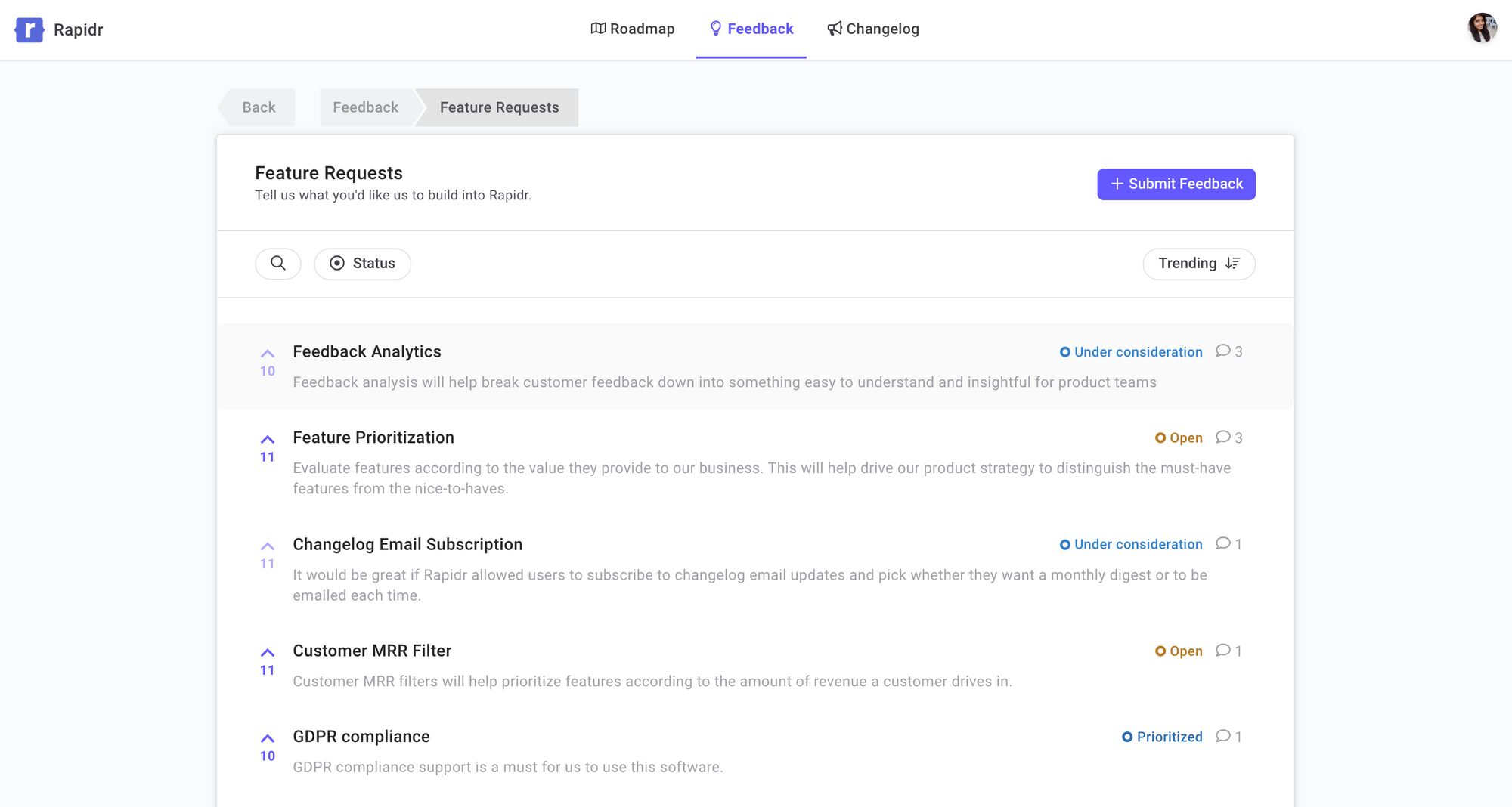
Secondly, you must organize and prioritize the gathered feedback and convert it into actionable insights that support your product development lifecycle.
You’ll most likely get feedback from different sources, which may take months to organize. So, centralizing them in a single place should be a priority. A feedback management tool like Rapidr can help you make it easily accessible to everyone, prioritize feedback, and take action.
Lastly, close the loop by letting your customers know the progress and announcing the newest releases. Rather than a simple thank you message, closing feedback loops should be highly personalized communication where you let them know how their feedback matters.
5. Obtain Customer Experience(CX) Scores
A company’s growth highly depends on how satisfied customers are. 80% of B2B decision makers start the buying process with a word-of-mouth recommendation. And satisfied customers are more likely to recommend your product to others.
The customer experience(CX) score is the most critical metric in customer satisfaction when combined with customer lifetime value(CLV). It measures the level of customer loyalty, how likely they are to buy again from that company, and customer sentiments.

Let’s briefly look at some commonly used customer experience scores.
- Net Promoter Score Survey (NPS): This measures customer loyalty and how likely they are to recommend it to someone on a scale of 0-10.
- Customer Satisfaction Survey (CSAT): A survey or questionnaire including star ratings or numbered scales designed to determine how satisfied customers are.
- Customer Effort Score (CES): This is used to predict future purchase behavior by assessing the simplicity of a single solution.
Here’s a guide explaining different kinds of user feedback in detail. Use these customer experience metrics to segment your customers into promoters, passives, and detractors to identify satisfied customers from unsatisfied customers to serve better.
6. Collect In-app Feedback
Imagine asking for feedback while your customer uses the product (without being annoying, of course). That would be a scenario where you get the most genuine feedback: real-time insight into the user's thinking.
In-app feedback is a system that allows users to provide feedback on their experience with the app while using it. It can be done by writing a review, rating the app, suggesting a new feature, or giving a thumbs up or down.
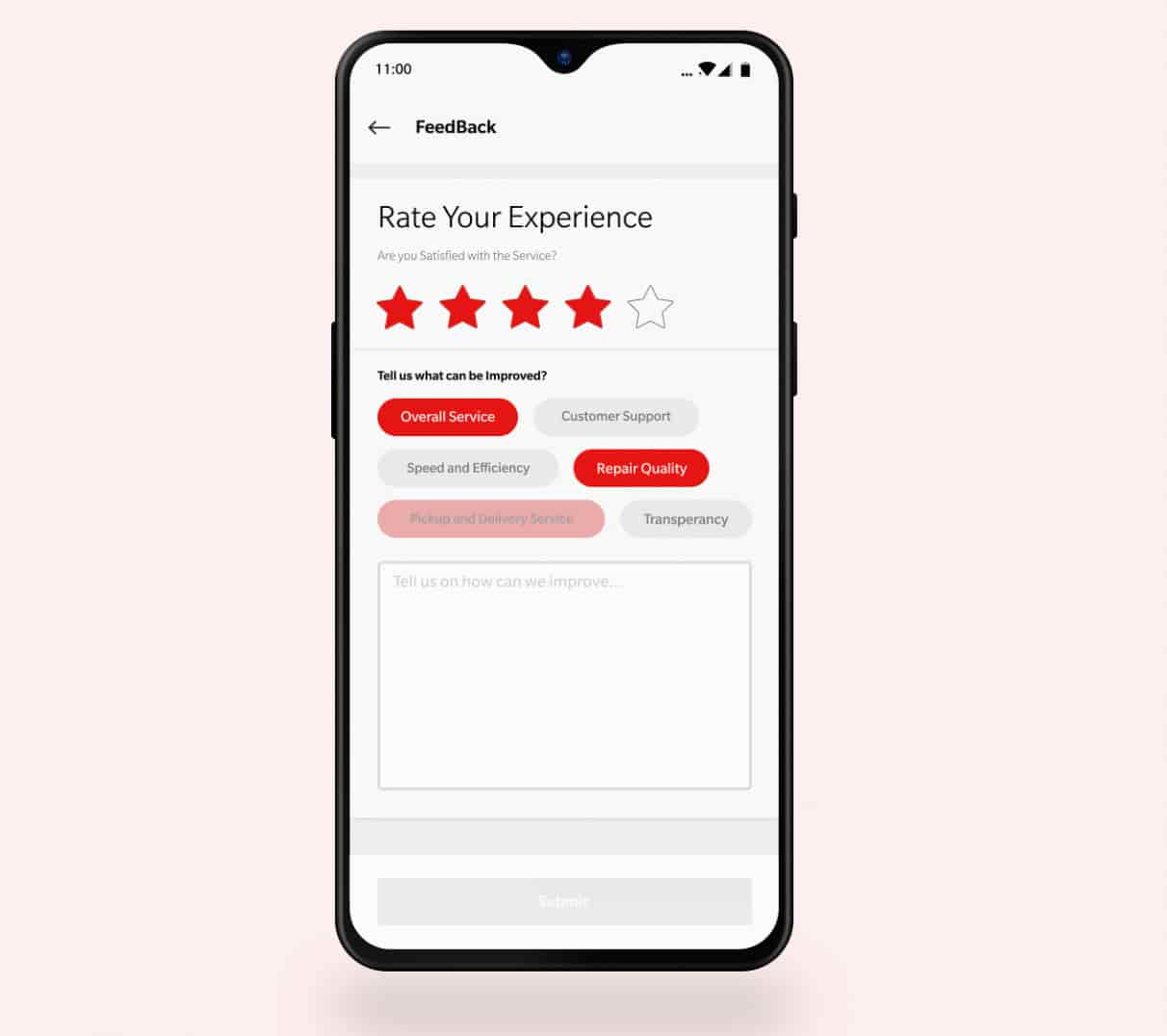
In-app feedback process allows customers to give feedback while using the app. It's a win-win for both you and your customers. They get a more convenient way to express feedback than emails or phone calls. You get to understand user experience and which features are most popular, which can help you to create your product development strategy.
Here are the most popular ways you can collect in-app feedback:
- Customer feedback widgets
- In-app surveys
- Feedback buttons
- In-app NPS survey
- Ratings and reviews
With Rapidr, you can capture in-app feedback by embedding a feedback board directly anywhere in-app to collect feedback. It will be captured on a dedicated feedback board, where you can quickly prioritize top feedback to your product roadmap.
7. Run Competitive Analysis and Collect Usage Metrics
How different are you from other similar SaaS products in the market? As a founder or product manager, you will have the perfect answers to this question. You might have even known this even before getting your first customer.
However, uncovering the voice of customers (VoC) will help you understand what they truly value. Competitive analysis is the key task for this. It allows you to avoid being left behind, find or validate your USP, and learn what motivated customers to subscribe to your SaaS with a better understanding of their competitors.
There are different ways to run a competitive analysis. You can do it by identifying competitors and their strengths and weaknesses, using business intelligence tools like Google Analytics, or by analyzing their online marketing campaigns on social media platforms or through paid advertising channels.
Analyzing usage metrics is another element that will help you create a product strategy. This can help you learn which features are mainly used and what each user segments prefer.
Usage metrics measure how often a given product is being used. Usage metrics are mainly used in marketing and research to measure the success of a product. Key usage metrics product managers track include:
- Engagement – The frequency and cadence of key actions.
- Revenue – Sales revenue generated.
- Conversion – Driving purchases, sign-ups, form-fills, etc.
- Retention – Users coming back.
- Activation – A user's first value moment.
- Active usage – Daily, weekly, monthly, or even annual active users
- NPS – Customer satisfaction
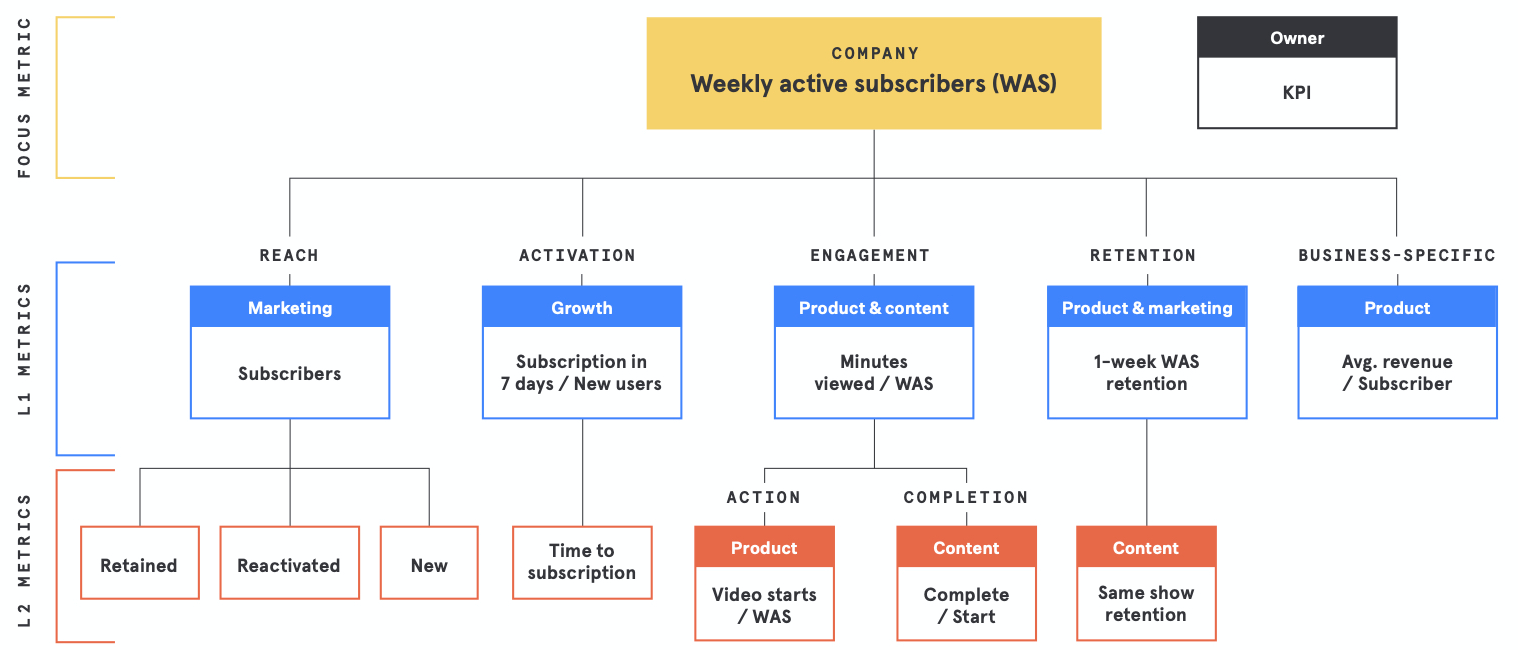
This can help you eliminate guesswork and build a strategy that enhances user experience and drives SaaS growth. You can collect usage metrics and qualitative insights for your app with the help of analytics tools such as Amplitude and Mixpanel.
8. Keep Everyone On The Same Page With Product Roadmap
Customer feedback strategies in product development are an efficient way to keep everyone in the loop, build roadmaps, and increase user engagement.
Responding to customers, updating team members, and sharing progress can be daunting. That doesn’t mean you need to skip this crucial step. A public product roadmap allows you to engage customers and provide visibility to all stakeholders simultaneously.
This roadmap will help you set product goals, prioritize upcoming features, and make data-backed decisions on what to build next. You can then showcase work progress without spending much time in communication.
A survey by Label Insights found that 94% of consumers prefer brands that practice transparency.
Product roadmaps create transparency and build trust. So creating a product roadmap that is easily accessible by everyone and helps communicate what you have planned for your product in the future brings your SaaS one step closer to growth.
9. Communicate New Features and Releases
A vital customer feedback strategy is to inform customers about new features or product releases via changelog or release notes. And a regular email blast to your user base is not the ideal way to go about this step.
Communication should be personalized, especially to customers who submitted feedback or requested the feature.
According to a study by Evergage, 98% of marketers report that personalization strengthens the customer relationship.
Here’s a time-saving way to increase user feature awareness: product changelog. Effortlessly notify customers and teammates about the latest updates. With Rapidr, you can create rich, compelling announcements within minutes. No more boring release notes!

10. Get Feedback from Churned Customers
The most constructive feedback comes from people who recently churned and decided against your product. The strategy is to discover why past customers moved on and uncover pain points you can fix with a product strategy to avoid failure.
For a SaaS company, churned customers can be those who have already canceled subscriptions or are at the end of their free trial period. For the latter, you can email when a customer does not opt for the paid plan or cancels when their free trial period is about to end.
Churned customers are a gold mine but a bit trickier to reach. The key is reaching them right when they are about to churn. Customer churn directly affects customer acquisition costs, lifetime value, recurring revenue, and customer retention for a SaaS.
Here’s how you should collect customer feedback for SaaS from churned customers:
- User Interviews: Talking directly with the churned customer would be more time-consuming but valuable since it's a more in-depth conversation.
- Cancellation Surveys: You could send out a survey or poll to ask them why they left, how they felt about their experience, and what could be improved. The second way would be through an email NPS survey.
- Feedback Form: Trigger an automatic feedback form or survey when the customer cancels a subscription. You can use feedback forms via Typeform with Zapier integration on your website and within your app with Rapidr.
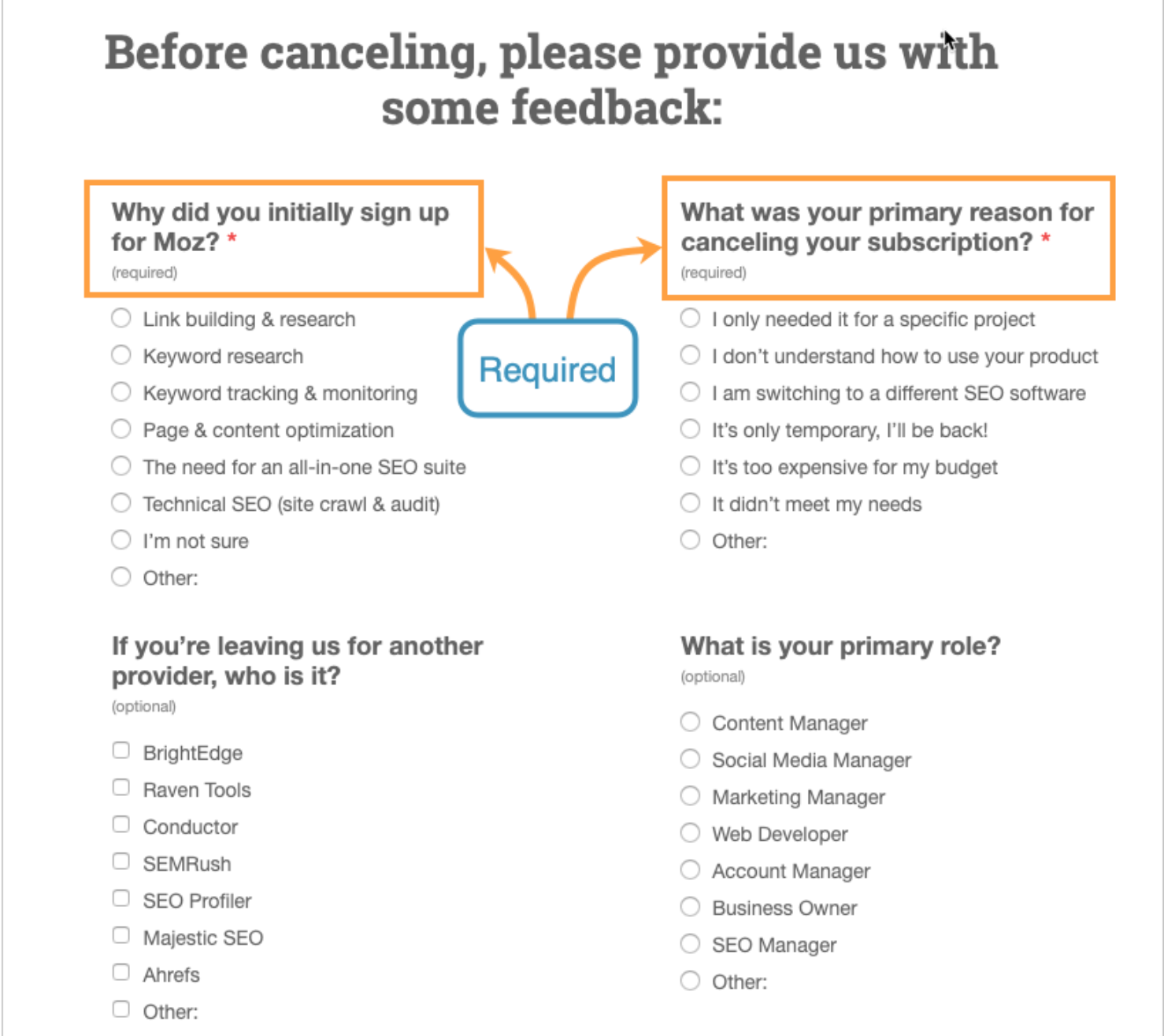
You can use this data to retain existing customers, understand why customers left the company, figure out what the company can do better, and prioritize product features.
Remember that while collecting customer feedback is essential, it's equally important to act on it. Analyze customer feedback, look for trends and joint issues, and use this information to drive improvements in your product. It's also good practice to communicate back to your customers to let them know that their feedback is valued and has been heard.
Effective measures taken to win churned customers back include loyalty programs, emails with offers and rewards, and automatic triggers for collecting feedback and understanding cancellation reasons as soon as they end their subscriptions.
Customer Feedback Tools For Your SaaS
1. Rapidr
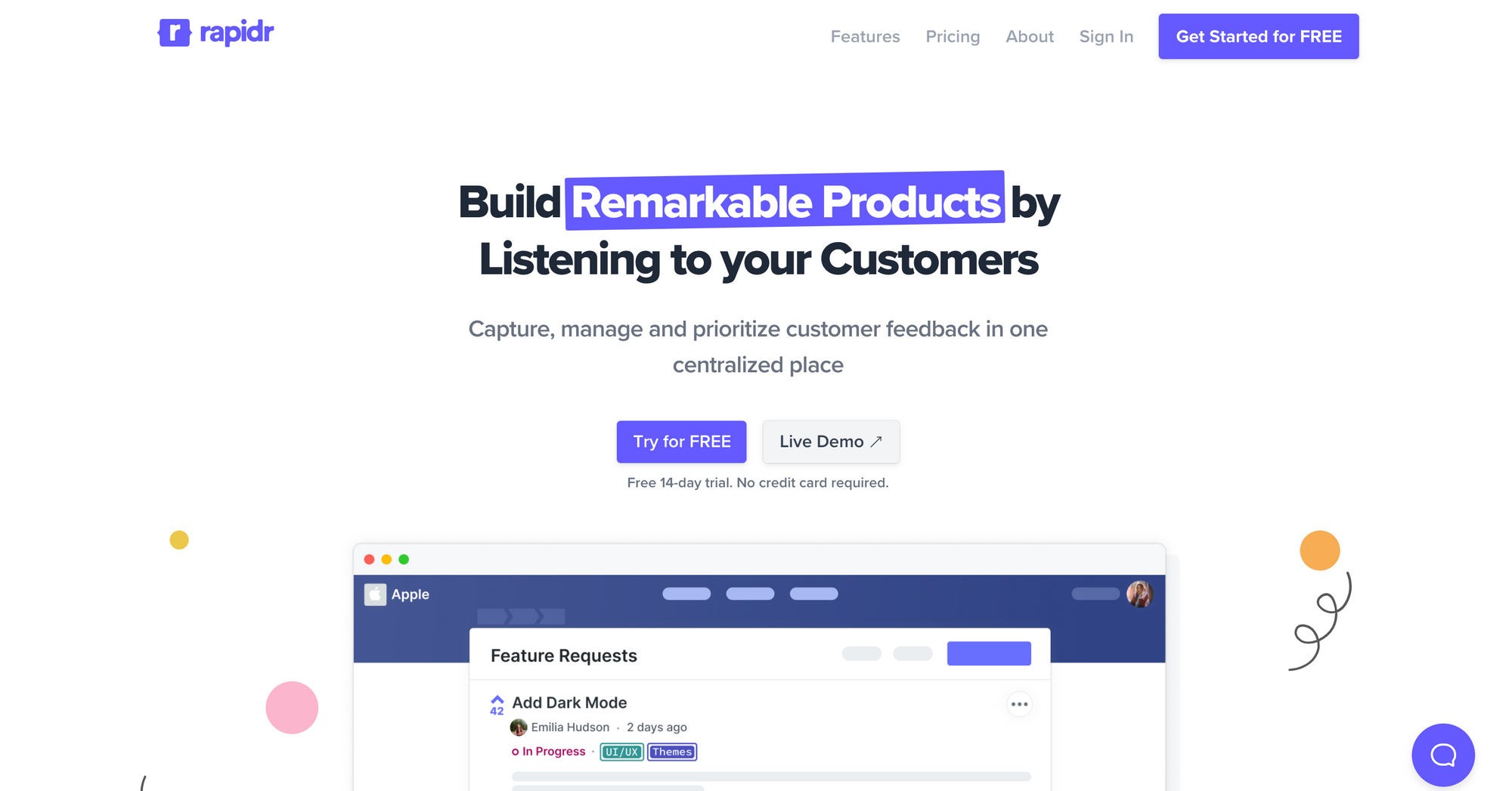
Rapidr is a customer feedback management software and feature tracking tool that helps manage the entire feedback lifecycle, from capturing feature requests to prioritizing features, informing product roadmap, and sharing product updates with changelog.
Rapidr allows you to capture and track all user feedback and organize and analyze them under one roof in a centralized location. Then, inform your roadmap with the most critical feedback and notify users of what's new with release notes.
2. UserVoice
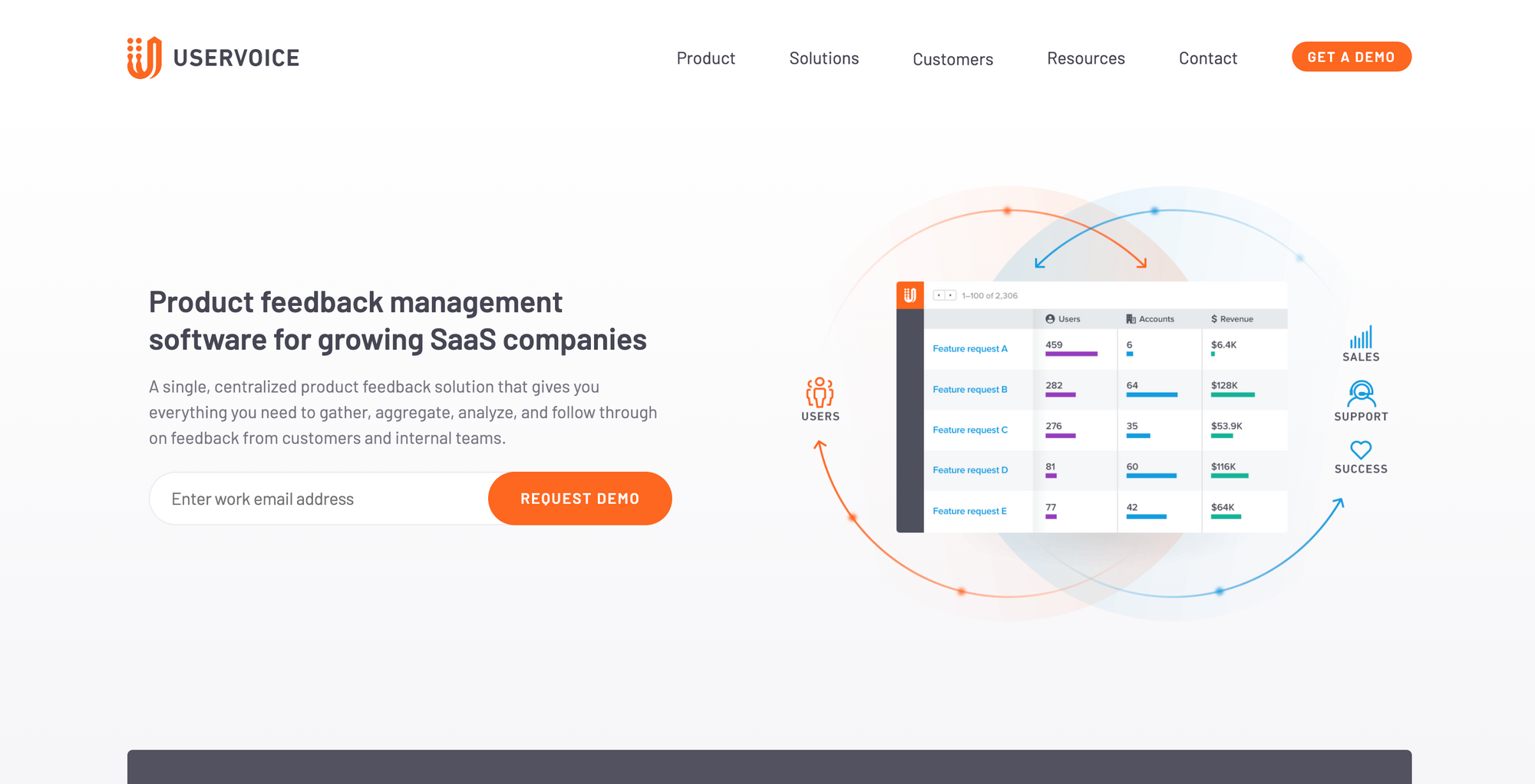
UserVoice caters to enterprise companies that want to gather customer feedback, process support requests, and increase customer satisfaction. UserVoice allows companies to create feature request voting boards for customers to share their ideas, opinions, and votes.
3. Typeform
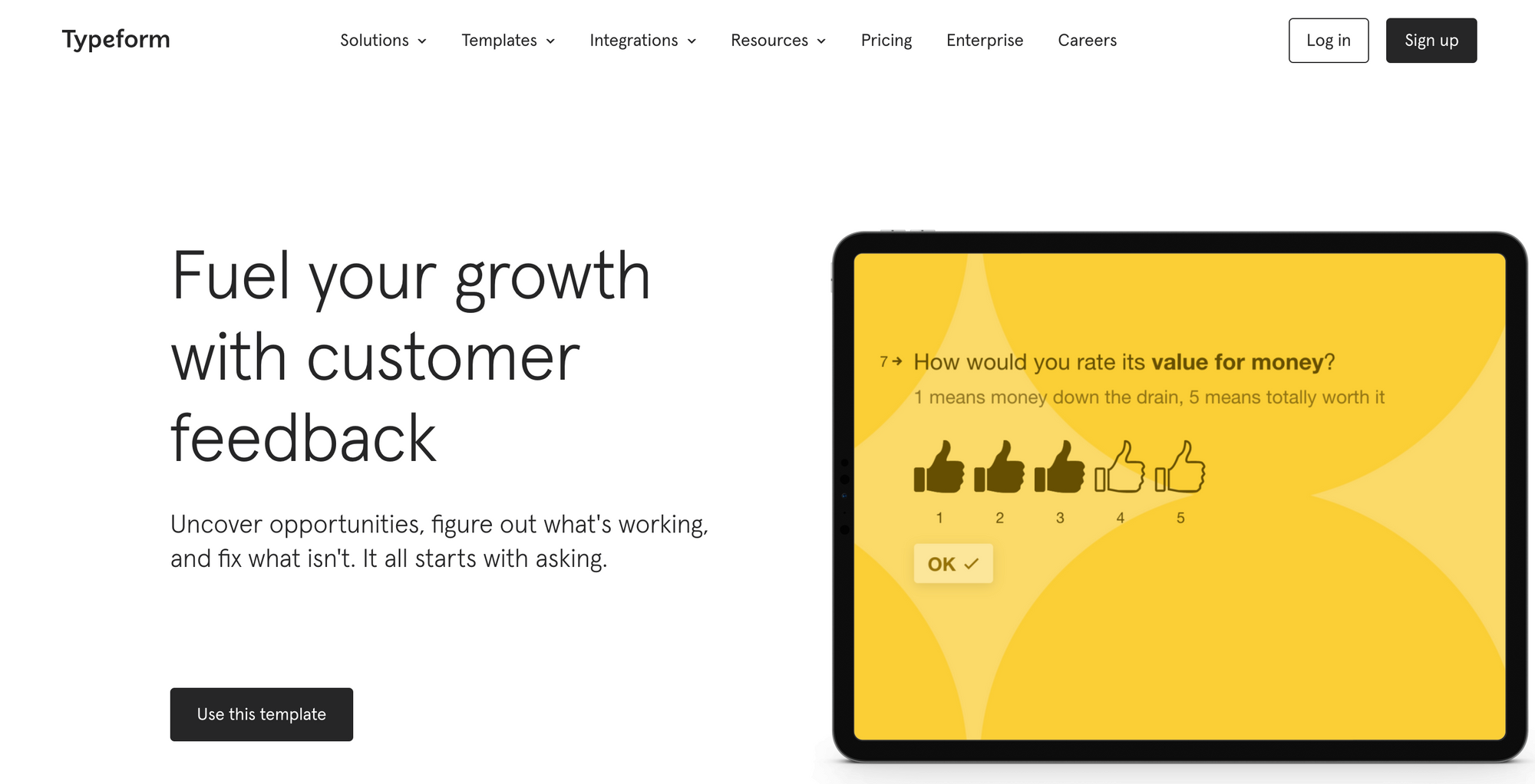
TypeForm is a survey software solution for handling customer feedback management processes that allow the creation of intuitive forms, surveys, and questionnaires. Typeform supports the survey design process with a wide range of templates offered, and the surveys can be built for business-centric purposes, such as lead generation.
4. Usersnap
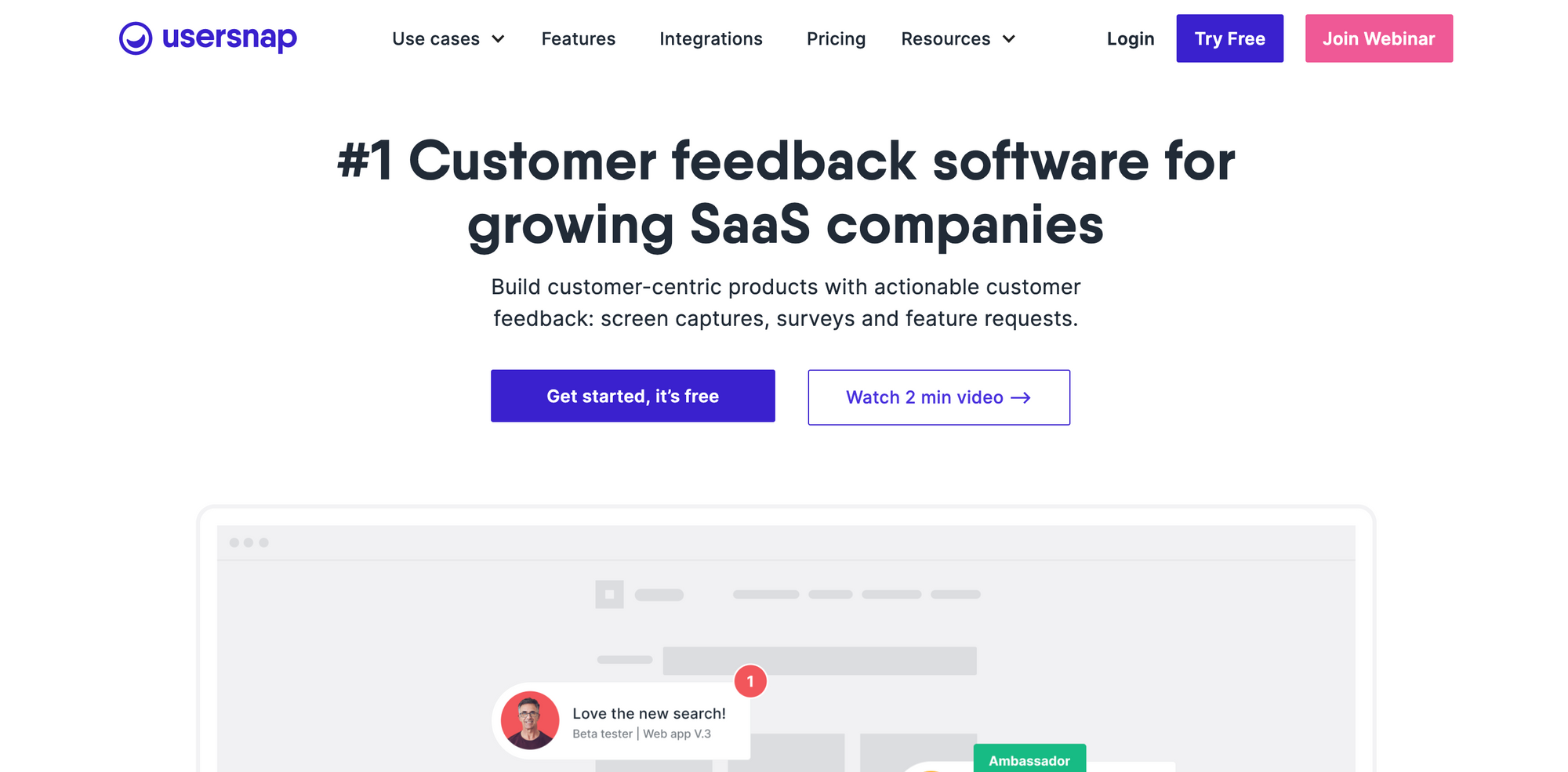
Usersnap is a feedback and bug tracking tool that allows screenshots of the current browser content to communicate effectively about issues and share feedback between developers, customers, and everyone involved. Usersnap is a visual feedback platform that helps measure user experience.
5. Delighted
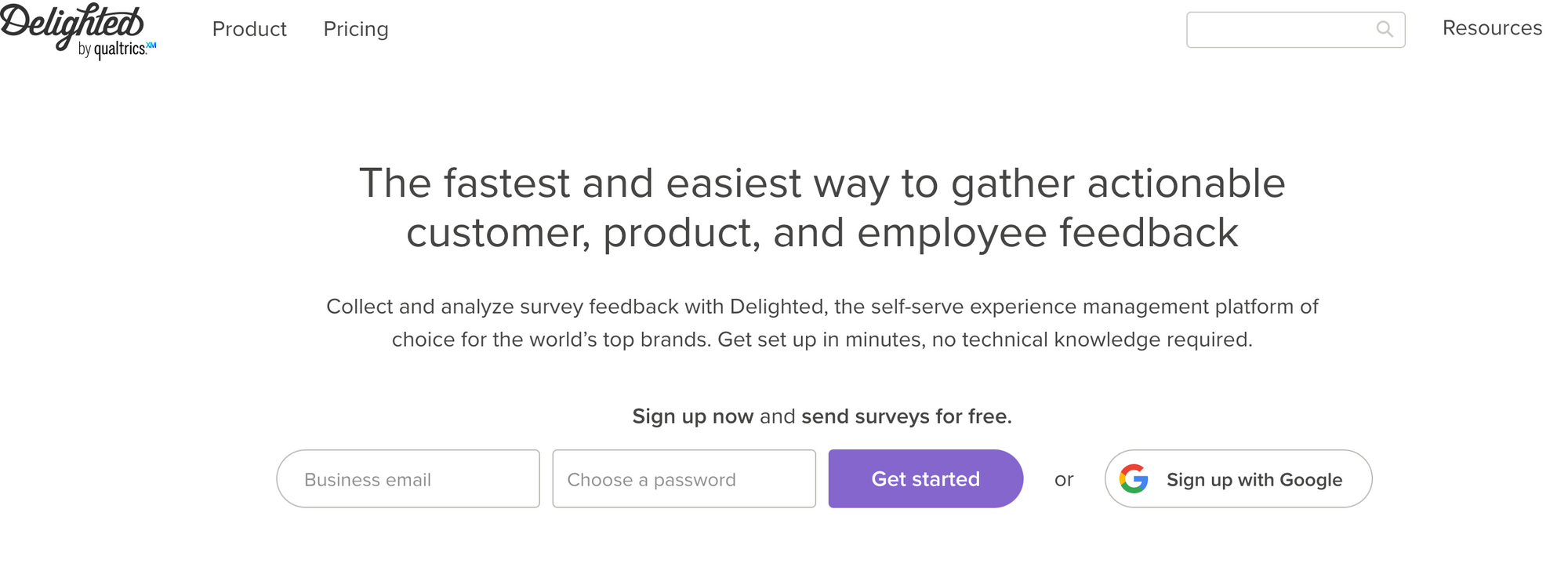
Delighted supports short-form or long-form surveys to target specific users and collect feedback inside mobile apps. It also provides an in-built reporting dashboard and real-time NPS surveys to track net promoter scores.
Conclusion
In a survey, 87% of senior business leaders in the US and UK see customer experience as their top-growth engine, but only 1 in 3 feel prepared to address it.
Having a strategy for customer feedback and acting on it already puts you in the top percentage of companies that will see significant growth.
To help you in the process, it’s always good to have a feedback management tool for different things, from organizing feedback to communicating new feature releases.
While many customer feedback management tools help you capture, organize, and prioritize feedback, consider the one that enables you to uncover the insights from the feedback and shape your product strategy.
1. Centralized and organized by category: The first step in solving this is to organize feedback in a central location. You’ll likely receive feedback from various channels and integrations like emails, Slack channels, support inboxes, forms, and in-app widgets.
2. Easily accessible to everyone: Centralizing all feedback data in one place, which can be easily accessed, will ensure that critical feedback doesn’t get lost and will allow you to understand what to prioritize.
3. Shared across internal teams: A central hub lets customer-facing teams access and submit feedback easily. A dedicated system will also help plan regular meetups with teams to discuss customer feedback and determine how to use it to define product strategy.
4. Prioritize and analyze feedback: Prioritize features and rank feature requests and tasks based on impact to make feedback-driven decisions. Remember, it's not just about collecting feedback. The real power lies in analyzing this qualitative data and implementing actionable changes that genuinely reflect your customers' desires and pain points. This ongoing listening, learning, and improving cycle sets successful companies apart.
Rapidr helps SaaS companies to build a customer-centric growth strategy. Looking for a dedicated place to keep track of different types of customer feedback and improve your product while listening to your customers? Get started now. Sign up for a free trial today.

